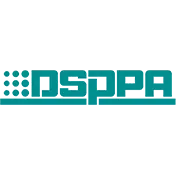
In the conference system,the microphoneacts as the sound pickup unit, responsible for capturing the voice of the conference speaker, and is considered a front-end device in the system.The choice of a microphone, besides being aesthetically pleasing, directly impacts the audio-visual effect at the conference site in terms of sound capture function and realized functions.

So, what are the standards for choosing a hand-in-hand digital conference microphone?
Sound Pickup
Sound pickup, capturing the speaker's voice;
Sound must be clear, loud, and noise-free.
Ordinary Conference Discussion
Supports multiple conference modes: chair-exclusive, ordinary discussion, automatic mode, full open mode, FIFO (first in, first out), and LIFO (last in, first out).
Video Conferencing Video Tracking
Supports multiple camera protocols, preset points can be set via the main unit, no need for computer adjustments.
Setting Chair and Delegate Modes
One chair microphone can be pre-set, which is different from other delegate microphones, possessing higher system permissions, such as speech control. When the chair microphone speaks, other microphones can be set to automatically mute.
Fire Alarm Auto Linkage
The conference system main unit provides a fire alarm auto linkage trigger interface. Once a linkage signal is sent from the fire center, the digital conference system immediately terminates the meeting, and the conference units display an alarm signal.
Other functions include voting, sign-in, etc.

Directivity
Supercardioid is suitable for longer distance pickup, cardioid is suitable for most situations, while non-directional microphones are not suitable for speech pickup as they may cause echo.
Additionally, as an experienced conference system supplier, we suggest the directional characteristics of the microphone should be chosen based on the speaker layout in the conference room. For centralized or semi-centralized public address systems, supercardioid or cardioid microphones are appropriate; for dispersed public address systems, cardioid microphones are usually chosen. If the microphone is far from the speaker and the room's reverberation time is not too long, omnidirectional microphones can be selected. When the sound source is very close to the microphone, near-field cardioid microphones with technical specifications to eliminate proximity effect can be used.
Frequency Response
Microphones with slightly lower static performance but better transient characteristics are better than those with slightly higher static performance but poorer transient characteristics. Additionally, microphones with uniform and smooth frequency response from low to high frequencies are better than those with prominent frequencies, as prominent frequencies may cause feedback.
Sound Pickup Distance
The usual sound pickup distance is 20-30cm. Too close can cause low-frequency popping sounds, affecting sound clarity. Too far, and the microphone picks up too much reflected and reverberant sound, leading to feedback.
Does Not Obstruct the Face
Common gooseneck microphones, due to limited pickup distance, need to be close to the microphone stem to speak, thus obstructing the face.
Stable Structure
Digital conference microphone microphone stems are frequently moved by users, having a short lifespan and easily becoming loose, which may cause noise. A stable structure in the microphone base and stem is needed.